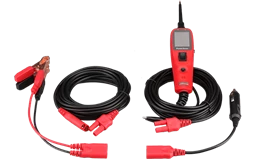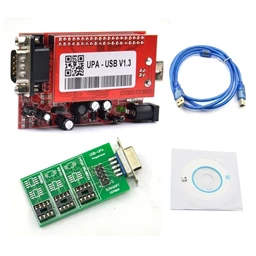The Silent Protector of Motor Health: The Knock Sensor The efficient and healthy operation of internal combustion engines depends on the harmonious operation of many complex sensors and control mechanisms. One of these sensors is the knock sensor, which is a critical component that is usually mounted on the engine block and listens to the “health” of the engine. The main task of the knock sensor is to detect abnormal and harmful combustion events that occur in the combustion chambers of the engine, that is, “knocking” (knocking or detonation). Knockdowns are high-frequency vibrations that occur as a result of uncontrolled self-ignition of the fuel-air mixture by the spark plug before or after ignition, which can damage the engine. The motor control unit (ECU) continuously monitors the signals from the knock sensor. If a knock is detected, the ECU immediately retracts (delays) the ignition advance (timing) or makes other necessary adjustments to protect the engine. In this way, excessive pressures and temperatures that can damage pistons, bearings and other internal engine components are prevented. Therefore, the knock sensor acts as a vital protector that extends the life of the engine and ensures that it operates at optimal performance. However, the knock sensor may also malfunction over time. A defective knock sensor may cause the ECU to be unable to protect the engine from knock or unnecessarily reduce performance. This situation can have negative consequences both in terms of engine health and driving experience. In this comprehensive guide, we will discuss in detail what the knock sensor works for, the symptoms that occur when it fails, the possible causes of the failure, the correct diagnostic methods and the process of replacement with Nitro Informatics expertise. What is a Knock Sensor Useful For and How Does It Work? A knock sensor is an accelerometer that usually contains a piezoelectric crystal. It is mounted on the engine block and detects vibrations that occur when the engine is running. Vibrations that occur during normal combustion and high-frequency, sharp vibrations that occur during knocking (abnormal combustion) are different from each other. When the knock sensor detects these characteristic knock vibrations, it sends an electrical signal to the ECU. When the ECU receives this signal,: 1. Retracts the Firing Advance: Delays the firing timing momentarily to stop the firing. 2. If necessary, It Adjusts Other Parameters: it can enrich the fuel mixture or reduce the turbo pressure (in turbocharged engines). 3. Registers Fault Code: If the knock is continuous or if an incorrect signal is coming from the sensor, it can register a fault code (for example, P0325 - Knock Sensor 1 Circuit Fault Bank 1). In this way, the engine is protected from the harmful effects of knocking. Knock-on may occur due to reasons such as low-octane fuel usage, excessive engine load, carbon accumulation, or engine overheating. What are the Symptoms of Knock Sensor Failure? A defective knock sensor can lead to various anomalies in the operation of the engine: * Decrease in Engine Performance: If the ECU is constantly receiving a “there is a knock” signal from a defective sensor (false positive), it may constantly unnecessarily retract the ignition advance. This situation causes a decrease in engine power and torque, reluctance to accelerate. * Increase in Fuel Consumption: Incorrect ignition timing and inefficient combustion may lead to an increase in fuel consumption. * Engine Fault Lamp (Check Engine) Lighting: When the ECU detects a problem in the knock sensor circuit (open circuit, short circuit, absence of signal) or an abnormal signal from the sensor, the engine lights up the fault lamp and a corresponding fault code (P0325, P0326, P0327, P0328, P0330, etc.) saves. * Abnormal Sounds From the Engine (Real Knock): If the knock sensor is defective and cannot report a real knock status to the ECU, metallic banging, clicking or hammering-like sounds may be heard from the engine. This is a very harmful condition for the engine and requires immediate intervention. * Increase in Exhaust Emissions: Inefficient combustion may lead to an increase in exhaust emissions. * Engine Misfire or Jerky Operation: Engine misfire or jolt may be felt, especially under load or when accelerating. * Difficult Operation or Stopping (Rare Cases): In case of serious sensor failures, the engine may become difficult to operate or stop at idle. Possible Causes of Knock Sensor Failures Knock sensor failures can be caused by various factors: * Deterioration of the Sensor Itself: Due to long-term use, excessive temperature or vibration, the piezoelectric crystal or other components inside the sensor may deteriorate. * Wiring Problems: - Broken or Damaged Cables: Disconnection, crush, cut or insulation damage to the cables leading to the sensor. - Loose or Corroded Connectors: Looseness, contamination or corrosion of the connectors of the sensor or ECU may interfere with signal transmission. - Short Circuit or Open Circuit: There is a short circuit or an open circuit in the sensor circuit. * Incorrect Installation or Torque Value: The knock sensor must be tightened to the engine block with a certain torque value. Excessive tightening or loose release may prevent the correct operation of the sensor or cause it to be damaged. • Problems with the Engine Block (Rare): Excessive corrosion or damage to the surface of the engine block on which the sensor is mounted may make it difficult for the sensor to accurately detect vibrations. * ECU Failure (Very Rare): Although rare, the source of the problem may be the ECU itself. * Mechanical Noise Sources: Sometimes another mechanical problem in the engine (for example, a loose part, exhaust leakage) may cause the knock sensor to produce the wrong signal. In this case, the problem is not with the sensor, but with the noise source. Diagnosis of Knock Sensor Failures Accurate diagnosis prevents unnecessary part replacement: 1. Reading of Fault Codes: Recorded fault codes related to the knock sensor (P0325 etc.) by connecting to the ECU with a professional fault detection device such as Autel, Launch offered by Nitro Bilişim.) are read. 2. Visual Inspection: The physical condition of the sensor, cables and connectors are checked for damage, looseness or corrosion. 3. Wiring Tests: Open circuit, short circuit or resistance values are checked in the sensor circuit using a multimeter. The cable Decoupling between the ECU and the sensor is tested. 4. Signal Control (with Oscilloscope): When the engine is running, the signal waveform generated by the knock sensor is examined with the oscilloscope. An abnormal or incomplete signal may indicate a sensor malfunction. 5. Sensor Resistance Test (For Some Types of Sensors): The internal resistance of some knock sensors can be measured with a multimeter and compared to the manufacturer's specifications. 6. Checking the Torque Value of the Sensor: It is checked whether the sensor is tightened with the correct torque. 7. Test with a Replacement Sensor (If necessary): If other tests do not give conclusive results, it can be observed whether the problem persists by replacing it with a known solid sensor. The Process of Changing the Knock Sensor Replacing a knock sensor that has been confirmed to be defective usually involves the following steps: 1. Safety Precautions: The vehicle must be cooled down and the battery pole head (usually negative) must be removed. 2. Detection of the Location of the Sensor: The knock sensor is usually located on the side of the engine block or under the intake manifold. The exact location of the vehicle is confirmed from the service manual. 3. Providing Access: If necessary, some parts (for example, the intake manifold, protection covers) may need to be removed to reach the sensor. 4. Disassembling the Old Sensor: The electrical connector of the sensor is carefully removed. Then, the bolt fixing the sensor to the engine block is removed and the sensor is removed from its place. 5. Installing the New Sensor: The new knock sensor (original or a quality OEM equivalent) is installed instead. Its bolt is tightened with a torque wrench in accordance with the manufacturer's specified torque value. Over-squeezing can damage the sensor, while leaving it loose can prevent it from working correctly. 6. Installing the Electrical Connector: The electrical connector of the new sensor is replaced and made sure that it fits perfectly. 7. Reinstalling the Disassembled Parts: If other parts have been disassembled to reach the sensor, they are reinstalled. 8. Installing the Battery Pole Head and Deleting Fault Codes: The battery pole head is installed. Fault codes related to the knock sensor on the ECU are deleted with the fault detection device. 9. Test Drive and Control: The vehicle is started and the test drive is carried out. The performance of the engine, the sounds and the status of the fault lamp are checked. Nitro Informatics Tip: When replacing the Jul sensor, make sure that the mounting surface of the sensor is clean and smooth. Applying dielectric grease to the connectors can help prevent corrosion. Expert Solutions to Your Knock Sensor Problems with Nitro Bilişim As Nitro Bilişim, we are a service specialized in the diagnosis and repair of knock sensor failures of every brand and model of vehicle. With our experienced technicians and modern diagnostic equipment: • We perform comprehensive fault detection for the knock sensor and related systems. • We perform sensor replacement operations using original or high-quality spare parts. • We make wiring and connector repairs. • We also detect possible other problems by performing a general health check of your engine.
Protect Your Engine From Knocking, Optimize Its Performance! Although it is a small part, the knock sensor is of great importance for the health and performance of your engine. If it fails, it may leave your engine vulnerable to serious damage or negatively affect your driving pleasure. When you notice the symptoms of a knock sensor malfunction, it is the most correct approach to seek professional help without neglecting the problem. For any problems you have with the knock sensor of your engine, you can rely on the expertise and quality service understanding of Nitro Bilişim. A healthy engine means a safe and enjoyable ride.

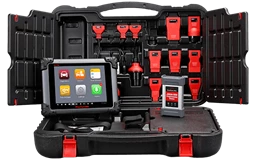
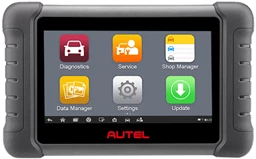
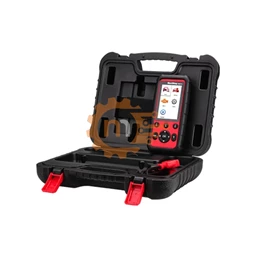
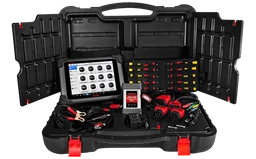
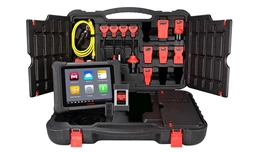

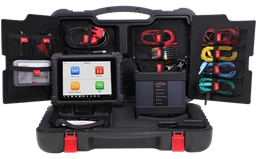


.webp?size=256)

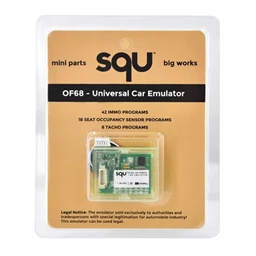


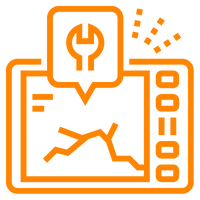
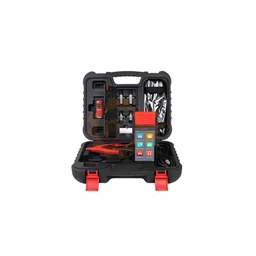
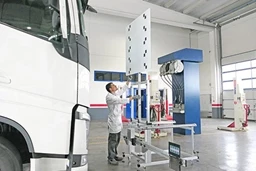
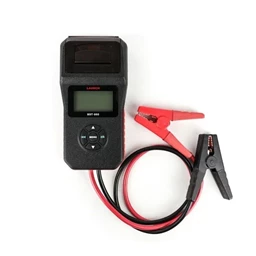
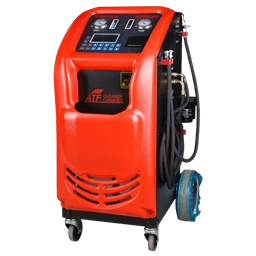
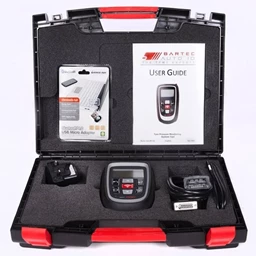
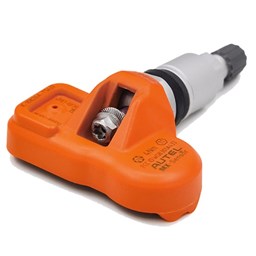
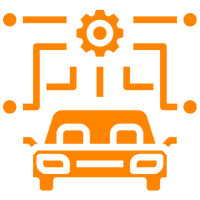
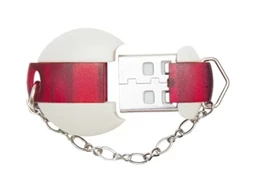


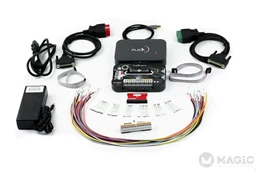

 Cihazı.webp?size=256)

